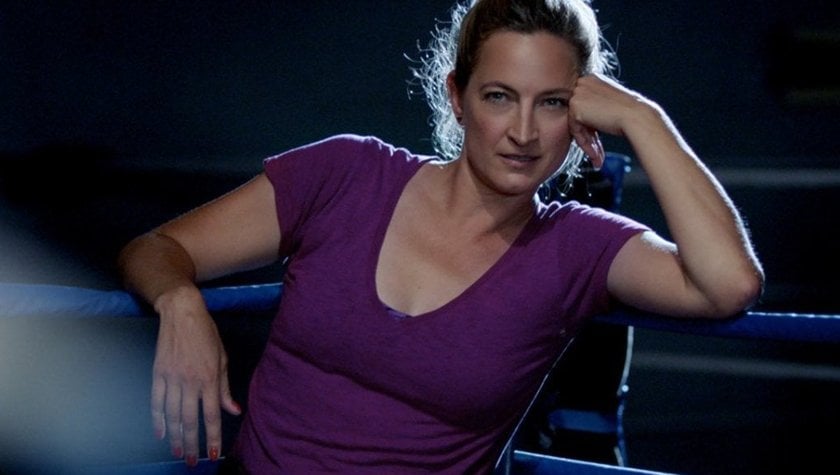The Necessity of Diversity Editors in Hollywood
December 30, 2020
For decades, BIPOC have fought tirelessly to be heard, acknowledged and supported within the entertainment industry, but Hollywood has long been controlled by white people who hire white people who write from a white perspective (and therefor their attempts at diversity often include use of stereotype and inclusion of bias — whether intentional or not) and so it's up to white screenwriters, white filmmakers, and white executives to recognize their privilege, hire diversely where possible, and seek to write representative characters. Enter: The Diversity Editor.
Marisa Kennedy is a writer, social justice advocate, and founder of The Diversity Editor LLC.
In addition to her diversity consulting services, Marisa also works as a Diversity Coordinator, joining productions at
various stages starting from the ground up to ensure retention of creative authenticity
surrounding diversity in the story. She also acts
as a liaison between teams and networks, especially where BIPOC and team members from other underrepresented groups are concerned.
So what exactly does a Diversity Editor do? They provide script coverage through a diverse lens that focuses on characters from historically excluded and oppressed groups. The material is reviewed to pinpoint
inauthentic or harmful language, character portrayals, as well as help expand diverse character perspectives to ensure their unique worldview is present in the material.
For Kennedy, "It also involves learning sessions for teams and leadership around bias, prejudice and discrimination, problematic policies and practices, micro-aggressive abuse, and bystander intervention. It’s one thing to ensure authenticity in a script, but what about the artists who are then pulled into these spaces? We have to make sure they’re accessible, safe and equitable for artists of the global majority, as well as all underrepresented groups."
"I also think it’s relevant to note that a Diversity Editor shines creatively in the development process, but it’s a position that can aid a team at any point, including on set/during rehearsals, in the editing room, with marketing, and in casting," Kennedy states.
She shifted her focus from acting to the creative process of developing story a
fter the heartbreaking murders of Michael Brown, Freddie Gray, and the many more Black folx who died at the hands of law enforcement between 2014 and 2015.
"I began to concentrate my energy on writing. Of course, these tragedies weren’t unique to this period, but these deaths and the lack of justice following them affected me deeply. Around the end of 2015, I knew I wanted to be part of putting positive representations of Black folx on television. I began noticing truly offensive and hurtful character portrayals and language in shows I had once loved, and realized these representations were making their way into living rooms across the world. It solidified a new understanding for me of how the art we consume shapes our view of ourselves and of others and I was incredibly concerned with the art I was seeing," So Kennedy literally became the change she wanted to see.
"I began writing, which quickly shifted to script editing for people with characters they didn’t quite know how to navigate or best represent. From there, my path revealed itself slowly as a much more all-encompassing umbrella of opportunity and healing. Right now, that centers on expanding perspectives around racism and prejudice within teams, as well as working creatively in development and during production."
As a woman of color who has also spent time as an actor, Kennedy's identity and life experience are integral skills in her tool box to help shape appropriate representation in film.
"Growing up in a community in the Pacific Northwest where there were only a handful of Black folx was like coming of age in a bubble. It’s only in looking back that I realize the bias and racism present in my experiences. I was navigating white spaces while enduring micro-aggressive abuse without realizing it, and without a thought to how I might improve access to and the safety of these spaces for others. It has felt very much like straddling a fence," she admits. "This is where I use my identity and life experience to support my work. I feel I have a unique understanding of both sides while knowing there is an opportunity for unity on this proverbial fence should those in power choose to access it by acknowledging, leveraging, and acquiescing some of their power."
Her experience as an actor on set and on stage gave Kennedy intimate knowledge from the other side of the table, so that recognizing language and representations that feel disingenuous come naturally to her now.
"That background coupled with being a Black/Multi Cultural and Queer woman gives me a deeper understanding of the places in which inauthenticity exists in material. But it’s not just about my experience or identity. I have to listen to those who belong to communities and groups I don’t identify with and I have to be honest about when a job isn’t mine to take.
Lastly, having worked with a large variety of teams as an actor helps me frame even my Inclusion, Equity, and Liberation work so that everything is filtered through a creative lens. Rehearsal and set are not akin to a typical office environment. What works on a corporate level doesn’t translate directly to creative spaces. So, having been in the industry since I was very young has really influenced and framed all of the work I do whether or not it’s inherently creative.
The stages she works through on material vary from situation to situation, depending on when Kennedy is pulled into the process and who else is on the project. "
Sometimes I’m the only one advocating in these spaces, but other times the team already includes or hires a writer or producer whose identity and life experiences support the development and expansion of certain characters as well. Every show is so different in their needs and it requires constant adjustment and reevaluation on my part, which is exciting.
One show I worked on this summer was going into production within two months of me getting eyes on the script. We were really working against the clock and feedback had to include very specific and pivotal suggestions. When I’m brought on earlier, I frame my notes as “thoughts” and leave the "
how"
to the writer, depending on how open they are to my suggestions. As a writer, I’m careful not to overstep while still using that skill to assess and frame the work.
I suppose the simple answer is that I begin with my initial impressions. Where is there language and characterization that is inauthentic, problematic, and/or stereotypical? Does this serve the piece or has it been included unintentionally? Are there moments when the perspective of the character is non-existent? Where are moments of opportunity to remedy this? And if the material is particularly foreign or sensitive, I’ll suggest hiring another writer or consultant if my identity doesn’t put me in a position of speaking from that experience."
Kennedy's favorite part of being a Diversity Editor is watching a script transform from an entity that is harmful to a community into a show that is "
authentic, relatable and inspiring for more than just the viewers who typically see positive representations of themselves in media. Also, watching the perspectives of writers, producers and executives expand. Each draft becomes richer as the entire team learns more about their biases and how they show up in the material and I’m right there learning along with them. There’s a healing in that for all involved and the material improves because of it."
On the other hand, "
Being brought on to a show to consult on cultural content and finding anti-fat bias in the script. People are ready for critique on Black issues, LGBTQIA+ characters, women identifying portrayals, etc. But getting creatives to recognize fatphobia continues to be extremely difficult for many reasons, I think. At the end of the day though, it’s really the marginalization of people based on their bodies. So, it’s especially frustrating for me when that bias is exercised through a character who has other intersections of marginalization."
Kennedy encourages everyone to adopt a writing process that includes more representation. From hiring diverse co-collaborators and giving them agency to really listening to everyone present at the table is crucial.
"We don’t live in a vacuum and we tend not to create art in one. We tend to hire and work with people we feel most comfortable with, and we tend to feel most comfortable around people who look and think like us. This can not only breed spaces that are inaccessible and unwelcoming to certain groups, but it’s also to the detriment of the project. Diverse rooms are more innovative. I believe this is not only because more perspectives are available but also because different biases are present. This puts us in a situation to illuminate one another’s blind spots which helps fuel greater storytelling."
And how does one deal with unconscious bias?
"Diversity Editing is absolutely akin to sensitivity reading, but with a title more representative of the work, in my opinion. Additionally, my job includes education around bias for crew, cast and producers, that is all about illuminating and examining how racism and prejudice manifest in artistic spaces and giving the team tools to mitigate harm when sticky situations arise. We all have unconscious biases," says Kennedy. It's about recognizing and being willing to be open.
"Those [unconscious biases] can be ideas that are in direct opposition to our core values. How could we possibly find these within ourselves and our work without outside guidance? This work leans on accepting that I have biases, conscious and unconscious, and so do you. Now, let’s make sure the art we distribute to the masses is as free of these biases as possible."
Follow Marisa on Instagram @DiversityEditor and for more information on her services, check out https://www.thediversityeditor.com/
Written by: Vanessa King
Vanessa King is an NYC-based producer, screenwriter, and professor who has worked in development with top-level industry talent for nearly two decades. Her work as a writer has received numerous awards, having earned her recognition from industry bodies including AMPAS/Oscar’s Nicholl Screenwriting Fellowship (feature) and Sony Worldwide Entertainment’s Emerging Filmmaker Program (TV Series). In 2005, she co-founded the New York Screenwriters Co-Op, New York’s only free-to-the-public screenwriting workshop with over 2000 active members. Vanessa is faculty at Gotham Writer’s Workshop (NYC) and Staffordshire University (UK), where she teaches both television and screenwriting to students, beginner to post-graduate. She recently was Showrunner of the TV pilot “Two Roads”, a concept she co-created and co-wrote for Sony’s VUE Network. Vanessa is passionate about diversity and inclusion within the industry and was a consultant on Final Draft Screenwriting Software’s Diversity and Inclusion product build. She’s a board member of the Diversity List, amplifying top scripts written by female-identifying and BIPOC writers. She is a judge for the Hip Hop Film Festival, The UCLA Graduate Screenwriter’s Showcase and The 24 Hour Film Festival. She was named one of The Huffington Post’s 13 Women To Watch and for three consecutive years, has been named to Vanity Fair’s “Downtown 100”, a list that recognizing New York’s top networkers in the entertainment industry. Originally from Canada, she lives in New York City.- Topics:
- Industry Interviews & Spotlights




